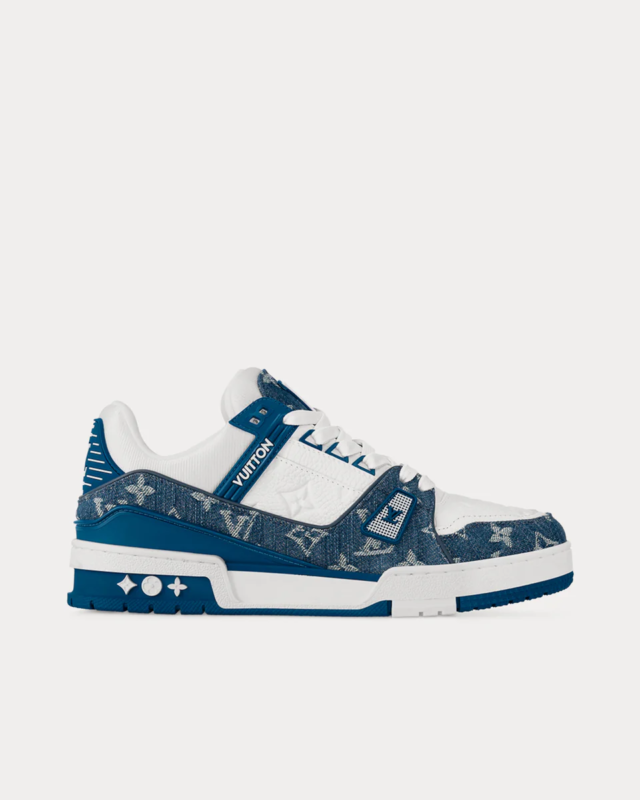Louis-Vuitton
Luxury Louis Vuitton Designer Shoes: Iconic UX Design for Style.
Luxury Meets Innovation: The UX Design Philosophy of Louis Vuitton
Luxury Louis Vuitton Designer Shoes, a name synonymous with luxury and timeless elegance, stands as a beacon in the world of high-end fashion. Beyond its iconic monogrammed handbags and avant-garde runway collections, the brand’s commitment to delivering exceptional customer experiences through UX design is a key component of its global success. From the digital interfaces of its e-commerce platforms to the sensory-rich experiences in its physical stores, Louis Vuitton demonstrates a seamless blend of tradition, technology, and thoughtful design.
The Role of UX in Luxury Louis Vuitton Designer Shoes:
In the luxury market, where products transcend mere utility to become symbols of status, art, and heritage, user experience (UX) takes on a heightened significance. For Louis Vuitton, UX is not merely about ensuring functional usability but creating an emotional connection that reflects the brand’s values. Whether a customer is navigating the brand’s website or entering a boutique, the UX must evoke a sense of exclusivity, craftsmanship, and innovation.
This holistic approach extends to every touchpoint, ensuring that the brand’s narrative is consistent and immersive. By prioritizing UX, Louis Vuitton elevates its customer interactions, transforming them into memorable and aspirational experiences.
Digital UX: Crafting Elegance Online:
The Louis Vuitton website and mobile applications are prime examples of how the brand brings its luxury ethos into the digital realm. The interface design is sleek, intuitive, and visually stunning, mirroring the sophistication of its physical products. Here are the key elements of their digital UX strategy:
- Minimalistic Design with a Focus on Imagery: The website design prioritizes high-resolution imagery that captures the texture, craftsmanship, and allure of Louis Vuitton’s products. The minimalistic layout ensures that the visuals take center stage, allowing users to appreciate the intricate details of each item.
- Personalization and Customization: Louis Vuitton’s digital platforms utilize data-driven personalization to tailor the browsing and shopping experience to individual users. Features like product recommendations, custom monogramming tools, and style guides enhance engagement and foster a sense of exclusivity.
- Seamless Navigation: Navigating Louis Vuitton’s website is a smooth and intuitive experience. The use of clear categorizations, an intelligent search bar, and strategically placed call-to-action buttons ensures that users can effortlessly explore collections and find desired items.
- Immersive Storytelling: Through videos, editorial content, and interactive features, Louis Vuitton shares the stories behind its collections, artisans, and collaborations. This rich narrative layer adds depth to the shopping experience, fostering a stronger emotional connection with the brand.
- Mobile-First Approach: Recognizing the growing importance of mobile commerce, Louis Vuitton’s UX design prioritizes responsive design and mobile optimization. The mobile app offers exclusive features such as AR-powered virtual try-ons, elevating convenience and interactivity.
Physical UX: The Boutique Experience:
While digital innovation is vital, Louis Vuitton’s physical stores remain the heart of its customer experience strategy. Each boutique is meticulously designed to reflect the brand’s heritage and cater to the expectations of its discerning clientele.
- Architectural Marvels: Louis Vuitton boutiques are often architectural masterpieces, blending contemporary design with nods to the brand’s legacy. The interiors are spacious, well-lit, and adorned with art installations, creating an environment that feels more like a gallery than a retail space.
- Personalized Service: The in-store experience is defined by exceptional customer service. Sales associates, trained as brand ambassadors, provide personalized attention, offering insights into the craftsmanship and stories behind each product.
- Multisensory Experiences: From ambient lighting and curated playlists to the subtle scent of luxury fragrances, Louis Vuitton’s stores engage all senses, enhancing the overall shopping journey. The tactile nature of handling products in-store adds a layer of authenticity and connection that digital platforms cannot replicate.
- Integrated Technology: Louis Vuitton seamlessly integrates technology into its physical spaces. Interactive displays, digital catalogs, and virtual mirrors enhance the shopping experience while maintaining the brand’s luxurious aesthetic.
Merging Physical and Digital: The Omnichannel Approach:
Louis Vuitton excels in bridging the gap between its physical and digital offerings, adopting an omnichannel strategy that ensures a cohesive experience across all platforms. Features like in-store pickup for online orders, virtual appointments with sales associates, and synchronized loyalty programs demonstrate the brand’s commitment to meeting customers wherever they are Luxury Louis Vuitton Designer Shoes..
The brand’s use of augmented reality (AR) and virtual reality (VR) is another testament to its innovative spirit. Customers can visualize products in their own spaces through AR apps or explore virtual recreations of flagship stores, making the Louis Vuitton experience accessible from anywhere in the world.
UX Design as a Reflection of Brand Values:
At its core, Louis Vuitton’s UX design philosophy is a reflection of its brand values: quality, innovation, and timeless elegance. Every aspect of the user experience, whether digital or physical, is designed to uphold these principles:
- Attention to Detail: Just as the brand’s artisans pay meticulous attention to the stitching of a handbag, its UX designers focus on every element of the user journey.
- Innovation: From pioneering digital tools to incorporating cutting-edge technology in stores, Louis Vuitton continuously pushes the boundaries of what’s possible in UX design.
- Emotional Connection: By weaving storytelling, personalization, and sensory engagement into its UX strategy, the brand fosters a deep emotional bond with its customers.
Challenges and Future Directions:
While Louis Vuitton’s UX design is widely celebrated, the brand faces challenges in adapting to the rapidly evolving digital landscape and catering to the diverse expectations of a global audience. Balancing exclusivity with accessibility, ensuring sustainability in design practices, and staying ahead in technology adoption are ongoing priorities.
Looking ahead, Louis Vuitton is likely to explore new frontiers in UX design, such as:
- Sustainability: Integrating eco-friendly practices into both digital and physical experiences, reflecting growing consumer demand for ethical luxury.
- AI and Machine Learning: Leveraging advanced algorithms for deeper personalization and predictive analytics, enhancing customer satisfaction.
- Immersive Technologies: Expanding the use of AR, VR, and mixed reality to create even more engaging and innovative experiences.
Conclusion:
Louis Vuitton’s approach to UX design exemplifies how a luxury brand can marry tradition with modernity, creating experiences that resonate on both functional and emotional levels. By prioritizing elegance, innovation, and customer-centricity, the brand not only meets but exceeds the expectations of its clientele. In doing so, Louis Vuitton reaffirms its position as a leader in both fashion and user experience, setting a benchmark for the luxury industry as a whole.

